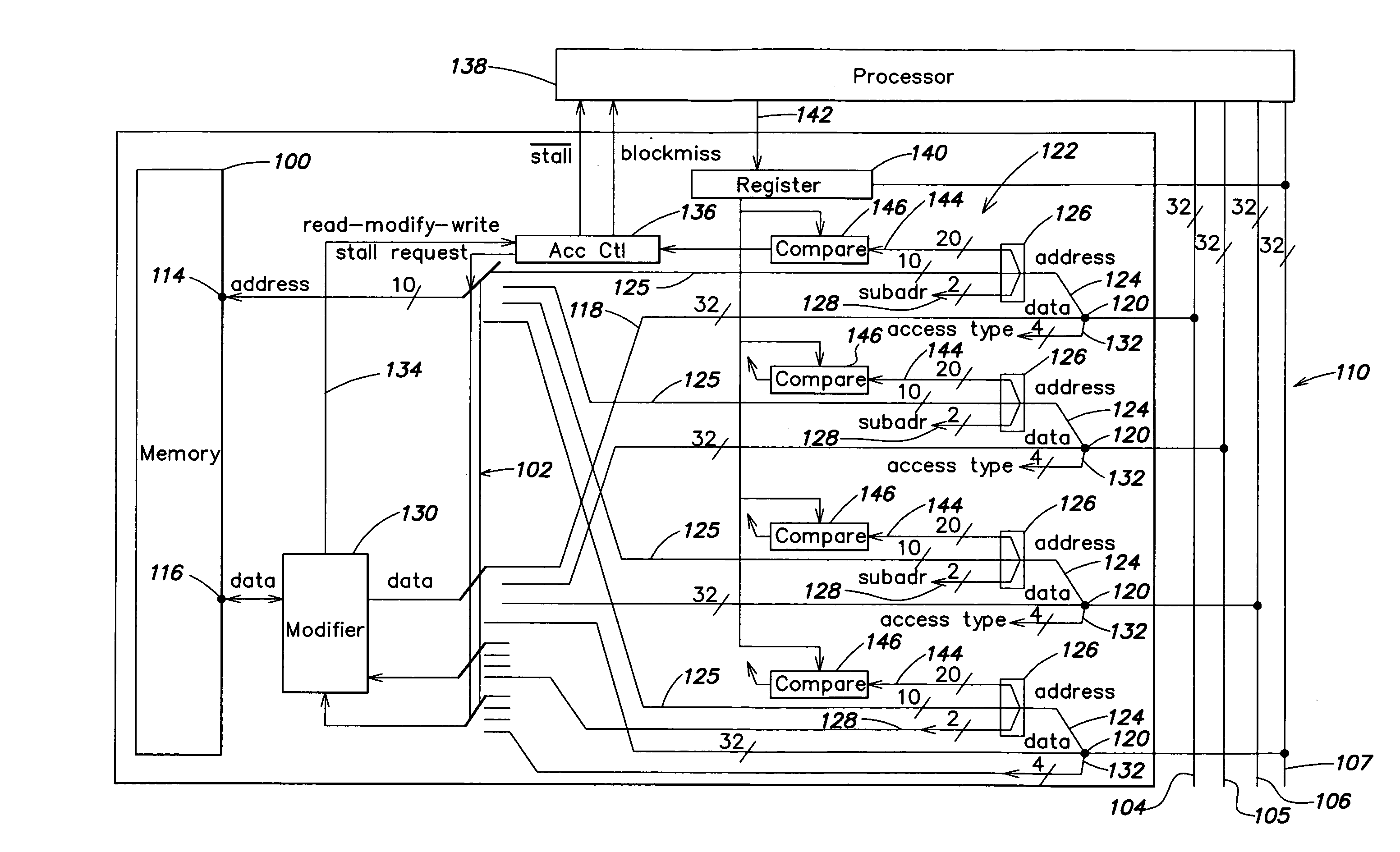Storage device for a multibus architecture
a storage device and bus technology, applied in the direction of static storage, program control, instruments, etc., can solve the problems of memory/bus connection, more complex multi-port memory and expensive implementation, and so as to prevent data loss or drop-out periods.
- Summary
- Abstract
- Description
- Claims
- Application Information
AI Technical Summary
Benefits of technology
Problems solved by technology
Method used
Image
Examples
Embodiment Construction
[0022]Referring to FIG. 1, a storage device 10 is connected to a multibus architecture 12, which may include three buses 14-16. The storage device 10 includes a memory 18 which may be selectively connected through a switching device 20 to one of the buses 14-16. Any additional components that might be required to operate the storage device 10, such as address buses and other control buses, may be added in accordance with the commonly available technical knowledge.
[0023]The memory 18 is connected through the multibus architecture 12 to a processor 22 according to the preferred embodiment. The processor 22 may have a storage system that includes a plurality of the memories 18, of which one bus 14-16 each is able to be controlled simultaneously for a memory access. As used herein, memory access means both the writing to the memory 18 of data (e.g., information data), and the reading of this data from a memory area of the memory 18 through one of buses 14-16. The buses 14-16 connect to ...
PUM
 Login to View More
Login to View More Abstract
Description
Claims
Application Information
 Login to View More
Login to View More - R&D
- Intellectual Property
- Life Sciences
- Materials
- Tech Scout
- Unparalleled Data Quality
- Higher Quality Content
- 60% Fewer Hallucinations
Browse by: Latest US Patents, China's latest patents, Technical Efficacy Thesaurus, Application Domain, Technology Topic, Popular Technical Reports.
© 2025 PatSnap. All rights reserved.Legal|Privacy policy|Modern Slavery Act Transparency Statement|Sitemap|About US| Contact US: help@patsnap.com



